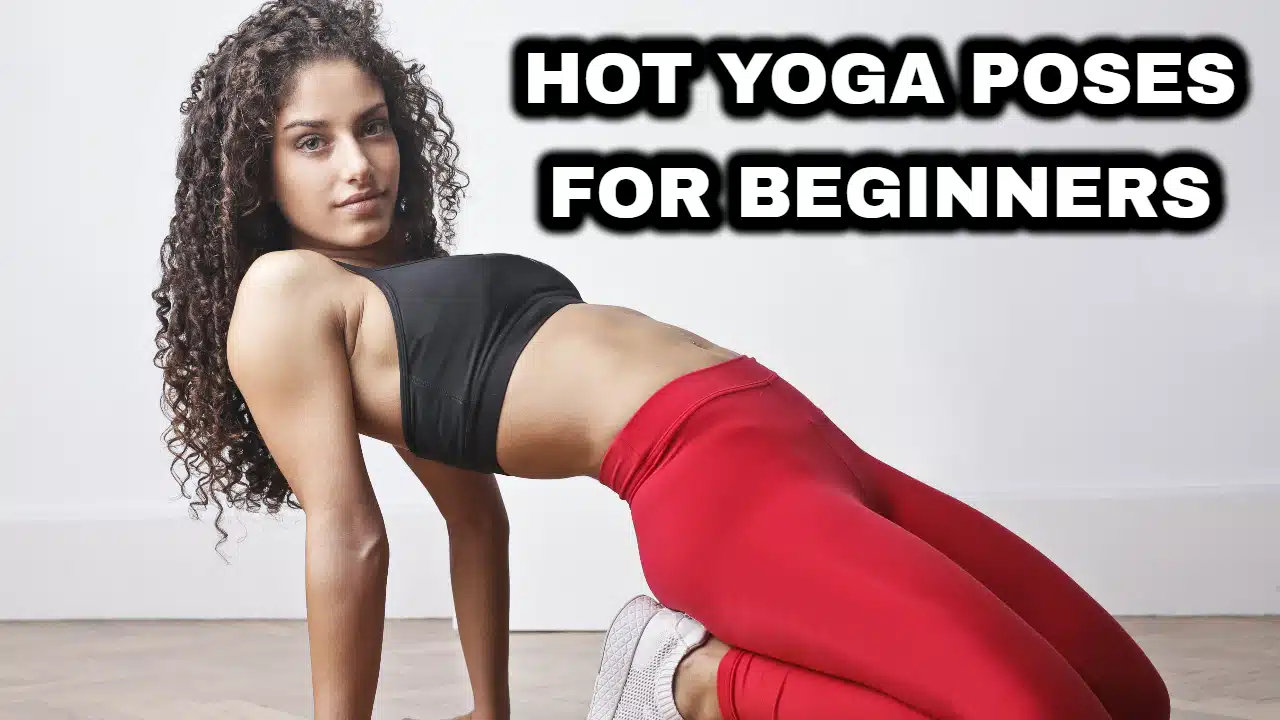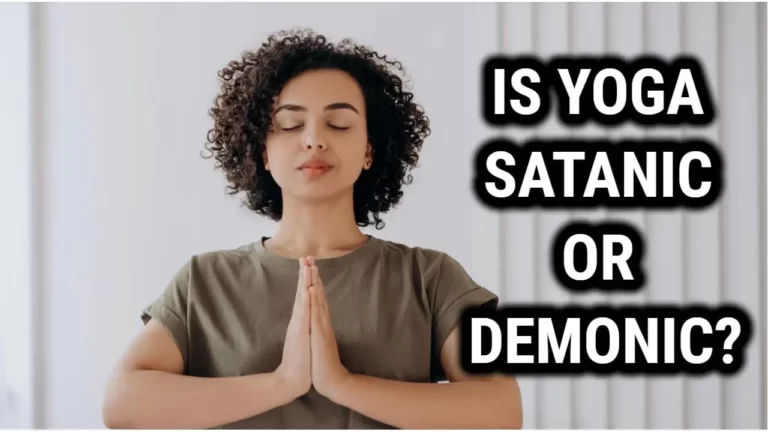Hot Yoga Poses for Beginners – Warming Up to Wellness

Hot yoga, a popular form of yoga practiced in a heated room, combines traditional yoga poses with increased temperatures to enhance flexibility, promote detoxification, and elevate the overall yoga experience.
The elevated temperature, usually ranging from 90 to 105 degrees Fahrenheit (32 to 40 degrees Celsius), serves to warm the muscles, allowing practitioners to deepen their stretches and potentially experience greater physical and mental benefits.
Benefits of hot yoga for beginners
Increased Flexibility: The heat in a hot yoga studio helps muscles become more pliable, allowing beginners to explore a wider range of motion and improve flexibility gradually.
Detoxification: Sweating profusely during hot yoga helps rid the body of toxins, promoting a sense of cleansing and rejuvenation.
Enhanced Circulation: The combination of heat and movement in hot yoga stimulates blood flow, delivering oxygen to muscles and promoting cardiovascular health.
Stress Relief: The challenging nature of hot yoga, combined with the heat, encourages mental focus and can serve as a form of moving meditation, helping beginners release stress and tension.
Precautions and considerations for practicing yoga in a heated room
Hydration: Adequate hydration is crucial in a hot yoga setting. Practitioners should consume water before, during, and after the session to prevent dehydration. Electrolyte-rich beverages can also be beneficial to replenish minerals lost through sweat.
Temperature Awareness: Beginners should be mindful of the room temperature and listen to their bodies. If the heat becomes overwhelming, it’s essential to take breaks, rest in a comfortable pose, and rehydrate.
Proper Attire: Wearing appropriate clothing is key to a comfortable hot yoga practice. Lightweight, moisture-wicking fabrics can help manage sweat and allow the skin to breathe, enhancing the overall experience.
If you are looking for Yoga Mat
This would be My Recommendation Check it Out – Gaiam Essentials Premium Yoga Mat With Mat Carried Sling
Essential Warm-up Poses
Gentle stretches to prepare the body for the heat
Neck Rolls (Greeva Sanchalana): Begin by gently rolling the neck in circular motions, both clockwise and counterclockwise. This helps release tension in the neck and shoulders, preparing the upper body for the upcoming yoga practice.
Shoulder Rolls (Skandha Chakra): Rotate the shoulders forward and backward, allowing the shoulder blades to move freely. This warms up the shoulder joints and improves mobility.
Spinal Warm-up (Ardha Matsyendrasana Variation): Sit with legs crossed and gently twist the torso to each side, placing one hand on the opposite knee. This movement warms up the spine and prepares it for more complex poses.
Breathing exercises to promote relaxation and focus
Deep Belly Breathing (Diaphragmatic Breathing): Sit comfortably, placing one hand on the chest and the other on the abdomen. Inhale deeply through the nose, allowing the belly to expand, and exhale slowly through the mouth. This calms the nervous system and enhances focus.
Kapalbhati Pranayama (Skull Shining Breath): Sit in a comfortable position, take a deep inhale, and exhale forcefully through the nose by contracting the abdominal muscles. This breathing exercise increases energy levels and clears the mind.
Alternate Nostril Breathing (Nadi Shodhana): Sit with a straight spine, use the thumb and ring finger to alternate nostrils while breathing. This technique balances the right and left hemispheres of the brain, promoting mental clarity.
Modified sun salutations for a gradual warm-up
Mountain Pose to Forward Fold (Tadasana to Uttanasana): Inhale, raise arms overhead, exhale, hinge at the hips, and reach towards the floor. This sequence stretches the spine, hamstrings, and calves.
Downward-Facing Dog to Plank (Adho Mukha Svanasana to Phalakasana): Transition from downward dog to a plank position, engaging the core and warming up the entire body. Repeat several times to build heat and strength.
Child’s Pose to Cobra (Balasana to Bhujangasana): From a kneeling position, lower the torso to the floor in child’s pose, then transition to Cobra, arching the back and opening the chest. This sequence warms up the back and prepares the spine for more intense poses.
Beginner-Friendly Hot Yoga Poses
Standing Poses
- Mountain Pose (Tadasana):
- Stand with feet hip-width apart, arms by your sides.
- Engage thighs, lift chest, and reach arms overhead.
- This foundational pose helps improve posture and balance while building strength in the legs.
- Warrior I (Virabhadrasana I):
- Step one foot back, keeping the front knee bent.
- Square hips and shoulders to the front, arms extended overhead.
- Strengthens the legs, opens the chest, and promotes focus.
- Warrior II (Virabhadrasana II):
- From Warrior I, open hips and arms parallel to the floor.
- Gaze over the front hand, creating a strong foundation and stretching the inner thighs.
Seated Poses
- Staff Pose (Dandasana):
- Sit with legs extended, spine straight, and toes flexed towards you.
- Strengthens the core, stretches the legs, and promotes proper alignment.
- Easy Pose (Sukhasana):
- Sit cross-legged, spine tall, hands on knees.
- Encourages a calm and centered state, fostering mindfulness and relaxation.
- Seated Forward Bend (Paschimottanasana):
- From Staff Pose, hinge at the hips and reach towards toes.
- Stretches the spine, hamstrings, and calves, promoting flexibility.
Balance Poses
- Tree Pose (Vrikshasana):
- Shift weight to one leg, placing the foot on the inner thigh or calf.
- Balancing pose that strengthens the legs and improves focus.
- Eagle Pose (Garudasana):
- Cross one leg over the other, arms crossed at the elbows.
- Enhances balance, stretches shoulders, and opens the upper back.
- Chair Pose (Utkatasana):
- Sit back into an imaginary chair, arms extended overhead.
- Strengthens thighs, engages core muscles, and builds heat in the body.
Cooling Poses
- Child’s Pose (Balasana):
- Kneel, sit back on heels, and extend arms forward.
- Restorative pose that provides a moment of relaxation and relieves tension.
- Cat-Cow Stretch (Marjaryasana-Bitilasana):
- Move between arching and rounding the spine in a tabletop position.
- Warms up the spine and releases tension in the back.
- Downward-Facing Dog (Adho Mukha Svanasana):
- From tabletop, lift hips towards the ceiling, forming an inverted V shape.
- Stretches the entire body, particularly the hamstrings and shoulders.
For Good Yoga Practice A Recommended Yoga Mat – Gaiam Essentials Premium Yoga Mat with Carrier Sling
Tips for a Safe Practice
Listening to the body and respecting personal limits
Awareness: Pay close attention to how your body feels during the practice. Listen to signals of discomfort or pain and modify poses accordingly.
Modification: Don’t hesitate to modify poses to suit your comfort level. Use props, adjust your stance, or take breaks when needed to prevent overexertion.
Mindful Breathing: Incorporate steady and intentional breathing. Deep, controlled breaths help maintain focus, reduce stress, and enhance the mind-body connection.
Proper alignment and engagement in each pose
Alignment: Focus on proper alignment in each pose to prevent strain on joints and muscles. Attend beginner classes or seek guidance from a certified instructor to ensure correct form.
Engagement: Engage the core muscles to provide stability and support during poses. This helps protect the spine and promotes a balanced practice.
Progress Gradually: Allow your body to adapt to the heat and intensity of hot yoga by progressing gradually. Avoid pushing yourself too hard and respect your current fitness level.
Gradual progression in intensity and duration
Start Slow: If you’re new to hot yoga, begin with shorter sessions and less intense poses. Gradually increase the intensity and duration as your body becomes accustomed to the heat.
Hydration: Hydrate adequately before, during, and after the practice. Sweating in a heated environment can lead to fluid loss, and staying well-hydrated is essential for overall well-being.
Cool Down: Allocate time for a proper cool-down after your practice. Incorporate gentle stretches and relaxation poses to help your body recover and minimize soreness.





